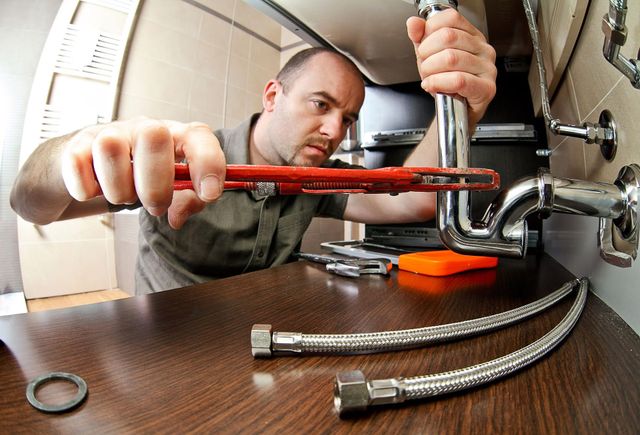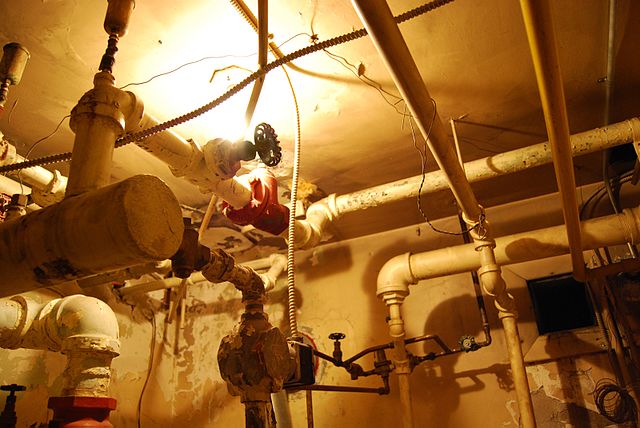They are making a number of good observations about Understanding Your Home's Plumbing Anatomy overall in this great article below.

Recognizing how your home's plumbing system works is important for every single home owner. From providing tidy water for drinking, food preparation, and showering to securely eliminating wastewater, a well-maintained pipes system is crucial for your family's health and wellness and comfort. In this detailed guide, we'll check out the complex network that comprises your home's plumbing and offer pointers on upkeep, upgrades, and handling usual concerns.
Intro
Your home's pipes system is greater than simply a network of pipelines; it's an intricate system that guarantees you have accessibility to clean water and efficient wastewater removal. Recognizing its elements and how they interact can aid you protect against pricey fixings and make certain whatever runs smoothly.
Basic Elements of a Plumbing System
Pipes and Tubing
At the heart of your plumbing system are the pipelines and tubing that carry water throughout your home. These can be made of different products such as copper, PVC, or PEX, each with its benefits in terms of sturdiness and cost-effectiveness.
Fixtures: Sinks, Toilets, Showers, etc.
Components like sinks, commodes, showers, and bath tubs are where water is utilized in your home. Understanding just how these components link to the plumbing system helps in identifying issues and intending upgrades.
Valves and Shut-off Factors
Valves control the circulation of water in your plumbing system. Shut-off valves are critical throughout emergencies or when you require to make repair services, enabling you to isolate parts of the system without interfering with water circulation to the entire residence.
Water System System
Main Water Line
The major water line connects your home to the metropolitan supply of water or a private well. It's where water enters your home and is distributed to various components.
Water Meter and Pressure Regulatory Authority
The water meter procedures your water usage, while a stress regulator guarantees that water flows at a risk-free pressure throughout your home's pipes system, avoiding damages to pipes and fixtures.
Cold Water vs. Warm water Lines
Comprehending the distinction in between cold water lines, which supply water straight from the primary, and hot water lines, which lug heated water from the hot water heater, helps in troubleshooting and planning for upgrades.
Water drainage System
Drain Pipes Pipeline and Traps
Drain pipelines bring wastewater far from sinks, showers, and toilets to the sewage system or septic tank. Traps prevent drain gases from entering your home and additionally trap particles that could create clogs.
Air flow Pipelines
Ventilation pipelines enable air right into the drain system, preventing suction that might reduce drainage and create traps to empty. Correct ventilation is necessary for maintaining the honesty of your pipes system.
Importance of Appropriate Water Drainage
Guaranteeing correct water drainage prevents backups and water damages. Routinely cleansing drains and preserving catches can prevent expensive repair services and extend the life of your pipes system.
Water Heater
Types of Hot Water Heater
Water heaters can be tankless or conventional tank-style. Tankless heating systems warmth water on demand, while storage tanks keep warmed water for prompt use.
Upgrading Your Pipes System
Factors for Updating
Upgrading to water-efficient components or changing old pipelines can boost water high quality, minimize water costs, and raise the worth of your home.
Modern Plumbing Technologies and Their Advantages
Check out modern technologies like clever leakage detectors, water-saving commodes, and energy-efficient water heaters that can save money and minimize ecological effect.
Expense Factors To Consider and ROI
Determine the in advance prices versus lasting savings when considering plumbing upgrades. Numerous upgrades pay for themselves through decreased energy expenses and less fixings.
How Water Heaters Attach to the Pipes System
Comprehending exactly how hot water heater connect to both the cold water supply and hot water distribution lines helps in diagnosing concerns like not enough warm water or leakages.
Upkeep Tips for Water Heaters
Consistently purging your hot water heater to eliminate sediment, inspecting the temperature settings, and evaluating for leakages can expand its life-span and boost energy effectiveness.
Common Pipes Concerns
Leakages and Their Reasons
Leaks can occur as a result of maturing pipes, loose fittings, or high water stress. Resolving leaks quickly prevents water damage and mold and mildew growth.
Obstructions and Obstructions
Blockages in drains and commodes are usually brought on by purging non-flushable items or a buildup of oil and hair. Making use of drain screens and being mindful of what drops your drains pipes can stop blockages.
Indications of Pipes Troubles to Look For
Low water stress, sluggish drains, foul odors, or unusually high water bills are indications of potential pipes issues that ought to be dealt with quickly.
Plumbing Upkeep Tips
Routine Evaluations and Checks
Schedule yearly plumbing examinations to capture problems early. Try to find indications of leaks, corrosion, or mineral buildup in faucets and showerheads.
Do It Yourself Upkeep Tasks
Basic tasks like cleansing tap aerators, looking for bathroom leaks making use of dye tablet computers, or shielding subjected pipes in cool environments can stop major plumbing concerns.
When to Call a Specialist Plumbing
Know when a pipes concern requires professional proficiency. Trying intricate repair services without correct expertise can lead to even more damages and higher repair expenses.
Tips for Reducing Water Use
Basic practices like fixing leaks promptly, taking shorter showers, and running complete tons of laundry and recipes can save water and reduced your utility bills.
Eco-Friendly Pipes Options
Consider lasting plumbing materials like bamboo for floor covering, which is durable and environmentally friendly, or recycled glass for counter tops.
Emergency situation Readiness
Steps to Take Throughout a Pipes Emergency
Know where your shut-off shutoffs lie and exactly how to switch off the water system in case of a burst pipeline or major leakage.
Importance of Having Emergency Situation Contacts Convenient
Keep call info for neighborhood plumbings or emergency situation solutions easily offered for fast action throughout a plumbing situation.
Environmental Influence and Conservation
Water-Saving Components and Appliances
Installing low-flow taps, showerheads, and toilets can substantially lower water usage without giving up performance.
DIY Emergency Fixes (When Relevant).
Short-lived fixes like utilizing air duct tape to patch a dripping pipe or putting a container under a trickling faucet can lessen damages until an expert plumbing professional arrives.
Final thought.
Understanding the makeup of your home's pipes system empowers you to keep it properly, conserving time and money on repairs. By following regular maintenance routines and staying informed about contemporary plumbing innovations, you can ensure your plumbing system operates efficiently for many years to find.
HOW YOUR PLUMBING SYSTEM WORKS
Which Pipes Do What?
Blue lines = fresh water supply entering the building Red lines = hot water supply entering the building Grey lines = pipes carrying waste away from the building and venting pipes carrying gases away from the building (through the roof) YOUR MAIN PLUMBING SYSTEMS
There are two main plumbing systems that support your home s basic plumbing needs one that brings clean water into your home, and one that sends dirty water away from your home. Connected to the toilet, bath, shower, and other faucets in your home, these two systems keep your water flowing in the right directions.
ACCESSING FRESH WATER
Fresh and clean water is brought into your home through the main water supply line . Filtered through one pipe, this water is pressured to flow into the various fixtures in your home at any given time.
This water can be sourced from a well located on your property, a pond or river (mostly cottages), or, as in most cases, from the city s municipal water treatment centre. However, it is important to note that water that is untreated, such as the water siphoned from ponds or rivers, may not be safe to drink. Personal water supplies always need to be treated for hardness and contaminants before consumed.
MUNICIPAL WATER SUPPLIES
Improve taste and odour Remove sediment Eliminate hardness Reduce chlorine COLD WATER SUPPLY VS. HOT WATER SUPPLY
Cold water flows into your home or building through the service line, which then distributes hot or cold water to your fixtures. This line is most commonly run through a central column that runs floor to floor. Hot water runs in short and straight pipes as the longer the pipeline, the more heat that will be lost in the transfer. Having shorter pipes also allows residents to access hot water more quickly.
WASTE WATER SYSTEM
Your wastewater system is divided into two parts pipes that send wastewater away from your home and venting pipes that send sewer gas away from your home. Sewage water travels through pipes that flush the water and waste towards local sewers that are operated and managed by your city or town. Most sewer systems rely on gravity to move the wastewater to where it needs to go.
The further away from your toilet or sink, the larger wastewater pipes become. This allows for waste to be disposed of from various parts of your home or business at once without pipe blockages. The angle and flow of these pipes are also essential for keeping your waste pipes clear of build up.
https://harrisplumbing.ca/how-your-home-plumbing-system-works/

Hopefully you enjoyed our excerpt about Understanding Your Home's Plumbing Anatomy. Thanks for taking time to browse our blog. Don't hesitate to pause to promote this article if you enjoyed it. Thanks for your time spent reading it.
Click Here